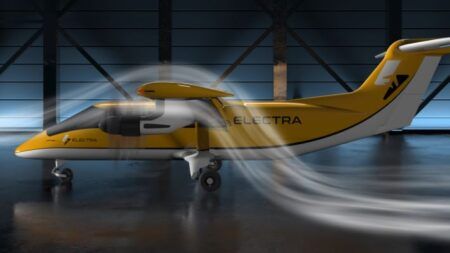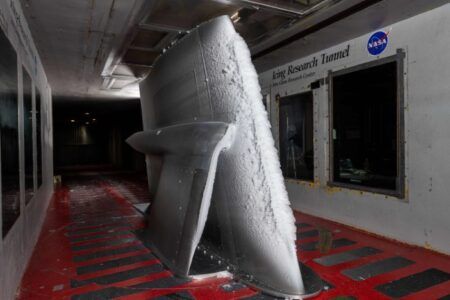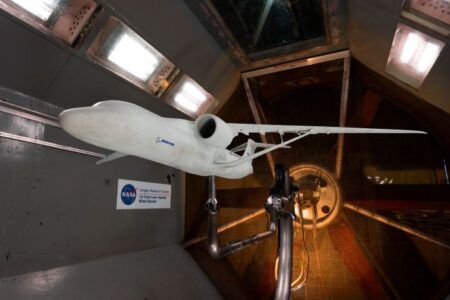Under some operating conditions, rotors are the main source of noise produced by a helicopter. To reduce this noise and the simultaneous vibrations, the German Aerospace Centre (Deutsches Zentrum für Luft- und Raumfahrt; DLR), together with Airbus Helicopters Deutschland, has tested active rotor control on a modern, five-blade rotor in a wind tunnel as part of the SKAT (Scalability and Risk Minimization of Technology) research project. The result was approximately a 30% reduction in noise.
The main rotor, which is both the source of the lifting force and propulsion on the helicopter, also creates a series of aeroelastic and aeroacoustic problems such as high levels of vibration and the generation of a great deal of noise. While vibrations generally have a negative impact on passenger comfort and the durability of components, the rotor noise plays a particularly key role in landing approaches over populated areas. One way to reduce this noise is active rotor control.
The advantages can clearly be seen in the wind tunnel. With the use of multiple swashplates, DLR researchers were able to successfully reduce vibration and noise emissions during landing approaches with the five-blade rotor. With individual blade control, rotor noise on the ground during the approach was reduced by up to three decibels, which corresponds to an approximately 30% decrease in noise.
In high-speed flight at more than 270km/h, the amount of power required for the main rotor, an indicator of a real helicopter’s fuel consumption, was reduced by more than 5%. Researchers were able to reduce the unpleasant vibrations created by the rotor during flight by more than 80% with the new adaptive control system. Helicopter flights could very soon become not only quieter, but also much more comfortable.
For investigations in the large low-speed facility (LLF) of the German-Dutch Wind Tunnels (DNW), researchers used the META multiple swashplate system, developed and patented by DLR, in order to adjust the rotor blades’ angle of attack multiple times during each rotor revolution – thus actively influencing the noise and vibration generation of the helicopter.
“META comprises two combined swashplates which allows us to individually control the rotor blades,” said SKAT project manager Philip Küfmann from the DLR Institute of Flight Systems, when explaining the functionality that has already been successfully tested on a four-blade rotor.
“The challenge with a five-blade rotor is that the rotor blades are asymmetrically divided between the two swashplates, which complicates the dynamic control of the entire system.”
DLR scientists and engineers therefore had to develop new control algorithms for the five-blade system, in addition to new hardware such as a five-blade rotor head and adapted swashplates.
During the tests in the wind tunnel, state-of-the-art measurement technology was used – in addition to the main rotor’s power requirement and the vibrations on the rotor head, noise emissions were also precisely measured. With the aid of a sound measurement field consisting of more than 150 separate microphones, the noise sources within the rotor area, such as the impingement of rotor tip vortices onto the following blade, could be precisely located. Noise radiation on the ground below the rotor was measured using a movable microphone system and was then evaluated as a ‘noise footprint’. Furthermore, up to eight high-speed cameras measured a number of markers attached to the individual rotor blades, in order to draw conclusions about the movement and deformation of the blades.
The project was funded as part of the German Federal Ministry for Economic Affairs and Energy (Bundesministerium für Wirtschaft und Energie; BMWi) aviation research program.
August 2, 2017




